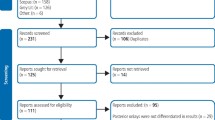Abstract
Data sources Electronic search through PubMed (Medline), CENTRAL (Cochrane) and Embase databases in November 2021. Grey literature searches (OpenGrey, Pro-Quest, National research register and the register of clinical studies hosted by the US National Institute of Health).
Study selection Randomised in vivo clinical trials (RCTs) with at least two-year follow-ups, that compared the longevity of adhesively luted indirect ceramic restorations against conventionally cemented indirect metal restorations. The teeth studies had to be about single tooth restorations, on premolars or molars, with sufficient information available for extraction; eg outcome assessment, reason for failure. No language or time restrictions were applied.
Data extraction and synthesis Two authors performed study selection, data extraction and quality assessment independently and in duplicate. The following clinical data was extracted: number of participants and dental health status, location of the cavosurface margin, cavity type, reason for intervention, methods and materials for treatment, follow-up, lesion activity at moment of restoration placed, lesion extension (surfaces of restoration), lesion margin (enamel or dentine). It was decided if the restoration was renewed, repaired or re-cemented, then this was classed as outcome failure. Grading of evidence was performed according to the GRADE network.
Results After duplicates were removed, 2,667 underwent title screening, 389 abstract screening, and 186 went on to have full text screening with 72 being excluded. In total, 110 eligible articles were then excluded from the 114 that were assessed leaving four RCTs meeting the eligibility criteria and being included in the synthesis, published between 2000 and 2013. Two studies were parallel-arm, the other two, split-mouth design. Overall, 443 restorations had been placed, 212 were adhesively luted ceramic, and 213 conventionally cemented metal restorations; these were all gold. The follow-up periods ranged from 5-7 years. Two studies compared inlays only, one looked at partial crowns only, and the fourth full crowns. The lowest failure rates were found for metal restorations, ranging from 0-11%. The failure rates for ceramic inlays and partial crowns were 5-9% over the same observation period. The failure rates for ceramic full crowns were 36% after five years. The most common failure for ceramic was found to be fracture of the restoration, whereas caries was the most frequent cause of failure for the gold restorations.
Conclusions The risk of bias was high for all four studies and the grading of evidence showed a low level of evidence. Only one meta-analysis could be performed comparing conventionally cemented metal vs adhesively luted ceramic restorations, showing the relative risk to fail for conventionally cemented metal indirect restorations is significantly lower than adhesively luted ceramic indirect restorations.
This is a preview of subscription content, access via your institution
Access options
Subscribe to this journal
Receive 4 print issues and online access
$259.00 per year
only $64.75 per issue
Buy this article
- Purchase on Springer Link
- Instant access to full article PDF
Prices may be subject to local taxes which are calculated during checkout
Similar content being viewed by others
References
Wang B, Fan J, Wang L, Xu B, Wang L, Chai L. Onlays/partial crowns versus full crowns in restoring posterior teeth: a systematic review and meta-analysis. Head Face Med 2022; 18: 36.
Azeem R A, Sureshbabu N M. Clinical performance of direct versus indirect composite restorations in posterior teeth: A systematic review. J Conserv Dent 2018; 21: 2-9.
Ng Y L, Mann V, Gulabivala K. Tooth survival following non-surgical root canal treatment: a systematic review of the literature. Int Endod J 2010; 43: 171-189.
Morimoto S, Rebello de Sampaio F B, Braga M M, Sesma N, Özcan M. Survival Rate of Resin and Ceramic Inlays, Onlays, and Overlays: A Systematic Review and Meta-analysis. J Dent Res 2016; 95: 985-994.
Vagropoulou G I, Klifopoulou G L, Vlahou S G, Hirayama H, Michalakis K. Complications and survival rates of inlays and onlays vs complete coverage restorations: A systematic review and analysis of studies. J Oral Rehabil 2018; 45: 903-920.
Wang B, Fan J, Wang L, Xu B, Wang L, Chai L. Onlays/partial crowns versus full crowns in restoring posterior teeth: a systematic review and meta-analysis. Head Face Med 2022; 18: 36.
Author information
Authors and Affiliations
Corresponding author
Ethics declarations
The author declares no conflicts of interest.
Rights and permissions
About this article
Cite this article
Holme, W. Gold versus ceramic - which will last longer for posterior indirect restorations?. Evid Based Dent 23, 166–167 (2022). https://doi.org/10.1038/s41432-022-0837-7
Received:
Accepted:
Published:
Issue Date:
DOI: https://doi.org/10.1038/s41432-022-0837-7



